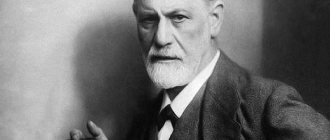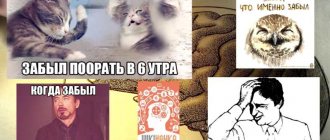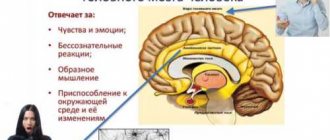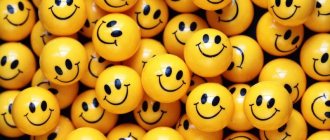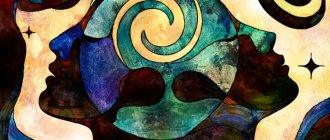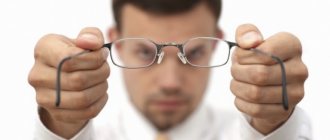What is Sigmund Freud's daughter famous for?
Now Anna Freud is no less famous than her famous father. She is known throughout the world as the co-founder (with Melanie Klein) of child psychoanalysis, as well as the head of the Psychoanalytic Society of Vienna, an honorary Doctor of Laws from the University of Vienna and Clark University, an honorary Doctor of Science from Jefferson Medical College; Sheffield, Chicago and Yale Universities, Fellow of the Royal Society of Medicine and Honorary Fellow of the Royal College of Psychiatrists, Honorary Doctor of Philosophy from Goethe University.
The youngest and closest
Anna Freud was born on December 3, 1895 in Vienna. In the family, she was the youngest among six brothers and sisters. But life turned out so that she became the only close person for her father who supported him in the most difficult periods.
During the First World War, Anna's brothers were drafted into the army, and her sisters, having gotten married, left with their husbands. She was the only one of all Sigmund Freud's children who remained close to her father. This further strengthened their spiritual closeness, which was also based on a common passion for psychology.
After that first conversation about psychoanalysis, Sigmund Freud began to share his thoughts with his daughter, and over time he took her to meetings of the Psychoanalytic Society.
But the child’s interest in his father’s studies in psychology did not immediately become a profession for his daughter. At first, Anna Freud decided to become a teacher, and in 1914 she fulfilled her intention by receiving a private pedagogical education. After completing her studies, she worked in a primary school in Vienna for five years. But her interest in psychology made itself felt there too - the young teacher became interested in child psychology. Subsequently, it was she who became Anna Freud's specialization, in which she achieved extraordinary success and gained worldwide fame.
Dr. Freud wanted a boy
Even those who very vaguely imagine the real essence of his teaching have heard about the father of psychoanalysis, Sigmund Freud. The name of his daughter Anna Freud is much less known, although her contribution to psychology and psychoanalysis is very great.
In the large family of Sigmund Freud, Anna was the youngest, sixth child.
Dr. Freud hoped that a boy would be born, and even decided to name him Wilhelm in honor of his friend Wilhelm Fliess , who proposed a theory of the bisexual nature of man. But a girl was born who was destined to become a faithful assistant and continuer of her father’s work.
As a child, Anna’s communication with her father was very limited - the famous scientist worked 18 hours a day to feed his family. Little Anna's closest friend was her nanny. Anna Freud's own childhood experiences became the reason that in adulthood she became interested in issues of child psychology and became the founder of such a scientific direction as child psychoanalysis.
Photo of Sigmund Freud's family. Front row: Sophie, Anna and Ernst Freud. Middle row: Oliver and Martha Freud, Minna Bernays. Back row: Martin and Sigmund Freud. Photo: Commons.wikimedia.org
Psychology class. Start
When World War I ended, Anna Freud left teaching and devoted herself entirely to her adored father. She was both his secretary and his nurse.
From 1918 to 1921, Anna took a course of psychoanalysis with her father and observed how he treated patients. Psychoanalysts considered this simply a flagrant violation of professional ethics. And only the authority of Sigmund Freud did not allow any of them to speak out against it.
Father and daughter continued to engage in psychoanalysis together. Since 1918, Anna, together with Sigmund Freud, took part in almost all International Congresses and meetings of the Vienna Psychoanalytic Society.
In 1920, the girl became a member of the Psychoanalytic Publishing House. At that time, the interests of the novice psychologist were related to fantasies and waking dreams. Anna even translated D. Varendok’s book “Waking Dreams” from English into German.
It was at this time that A. Freud gave her first reports on psychology.
Wolves howl-
The dense forest is a Russian metaphor for the unconscious. The further into the forest, the... different options are possible. If you are afraid of wolves, do not go into the forest. Capitoline Wolf Magnifier. Mowgli the wolf's son. All Freudian offspring work on symbols. Everyone, one way or another, was and is afraid of wolves. A little gray top will come and bite you on the side. The wolves howl, the bittern screams, the woodpecker knocks on the crow. In his old age, Freud loved dogs and watching small children. A dog is obtained from a tamed wolf. Soon all wolves will be tamed... It’s time to organize the Sigmund Freud Wildlife Foundation to store and protect the unconscious. If the unconscious ends, so will the resources... The Tambov wolf is your comrade. Wolves are shameful. To live with wolves is to howl like a wolf. A dog is an analyzed wolf. Wolves are all the same. Dogs are very different. The wolf hunt is underway, the hunt is underway. And the huntsmen were left with nothing? Not true! The huntsmen made very good money!
When working on the text, information sources were used: www.wikipedia.org with “open source”, as well as Paul Ferris’s book “Sigmund Freud”, Potpourri Publishing House, Minsk, 2001, translated from English by E.A. Martinkevich
Father's illness
Anna received the unexpected news that her father had cancer. She selflessly tried to support her loved one. It was thanks to his daughter that Sigmund Freud, after making a terrible diagnosis, lived for another 16 years, going through 31 operations. The daughter not only looked after her father, but also took over most of his affairs: she read Sigmund Freud’s reports at international congresses and accepted his awards.
From 1925 to 1938, A. Freud headed the Vienna Psychoanalytic Society.
Personal life
Unlike her sisters and brothers, Anna was not happy in her personal life; she had no fans vying for the role of husbands. The busy work schedule in a number of scientific institutions prevented legal marriage and the birth of children.
In her youth, in addition to psychoanalysis, Anna was fond of knitting; her father said that this was how she subconsciously replaced intimacy. Researchers of the woman's biography believed that in fact, her intelligence and ability to psychoanalyze shocked and frightened men.
Sigmund and Anna Freud, Dolomites, Italy, 1913
Published by Berfrois Wednesday, December 3, 2014
Anna Freud with her father Sigmund Freud
Freud's fate was reflected in the military conflict that engulfed Europe: Adolf Hitler's rise to power could have destroyed the entire family. Representatives of Jewish nationality, after a series of interrogations by the Gestapo, preferred voluntary exile to a nervous life.
By that time, his father and mentor was suffering from an incurable disease; he did not survive the move to the territory of a foreign country. Anna, who grieved for her parent, lived in Paris and London, where the consequences of the terrible Second World War were less felt.
Anna Freud. Child psychoanalysis
1927 was the year of publication of Anna Freud’s serious scientific work entitled “Introduction to Child Analysis.” The book includes lectures that Anna gave at the Psychoanalytic Institute in Vienna. These lectures introduced listeners, and after their publication, readers, to the specifics of child psychoanalysis.
In her book, Anna Freud considered psychoanalysis of this kind based on the fact that the psyche of children obeys completely different laws than the psyche of adults. Therefore, she concluded that when psychoanalyzing a child, in no case should one mechanically transfer methods of analyzing the psyche of adults to him. A child psychologist also drew attention to the great effectiveness of play therapy and emphasized the decisive role of his environment in the development of a child.
In the lens of psychoanalysis - not only the unconscious...
In 1936, Anna Freud published another of her books, “The Psychology of the Self and Defense Mechanisms.” Many call the book Anna’s main theoretical work. It was a special gift for her father's 80th birthday. In it, the psychologist developed the ideas of psychoanalysis about “defense mechanisms,” showing the role they play in the formation and functioning of the psyche. In this work, Anna refuted the opinion that psychoanalysis deals only with the area of the unconscious. What was new in psychological science was that A. Freud considered the “I” as the center of consciousness.
Anna Freud. Defense Mechanisms
Working on the development of psychoanalytic ideas about the “I,” Anna actually founded a new direction in psychology called ego psychology.
Anna Freud's great contribution to science is the development of the theory of defense mechanisms. The term was first coined by her father in 1894. Sigmund Freud later used it in a number of his works when he described the struggle of the “I” against unbearable thoughts and affects.
The daughter made some adjustments to her father's concept. Anna Freud viewed defense mechanisms as products of development and learning.
She put forward the idea that the set of defense mechanisms is individual in nature and indicates the level of adaptation of the individual. She also emphasized the role of protective mechanisms in resolving external conflicts.
Anna Freud's defense mechanism can be considered as ways of people reacting to situations that threaten them, which are used at an unconscious level in order to protect the “I” from awareness of phenomena that give rise to anxiety. Her original monograph describes fifteen such mechanisms.
Persecution of Jews forced them to emigrate
After the inclusion of Austria into Germany in 1938, persecution of people of Jewish nationality by the Nazis began. When the Nazis arrested Anna and interrogated her at the Gestapo, Sigmund Freud firmly decided to leave the country. But the Nazi authorities did not want to release the scientist. They “put pressure” on Sigmund Freud and forced him to sign papers in which he allegedly thanked the Gestapo “for a number of good services,” which was very humiliating for the scientist. But that’s not all: for the right to leave Germany he had to pay a huge “ransom” to the Reich government - 4 thousand dollars!
“I can recommend the Gestapo to everyone”
The most terrible year for the Freud family was 1938, when, as a result of the Anschluss, Austria was annexed to the Third Reich. The Nazis not only denied psychoanalysis, but brutally persecuted its adherents. On the eve of the Anschluss, almost all psychoanalysts left Vienna. Dr. Freud, elderly and sick, did not want to leave. As a result, both he and his daughter were summoned to the Gestapo.
Anna, going for interrogation, hid an ampoule of poison in case she was tortured. Only the intervention of the international community saved Freud and his daughter from death. Hitler did not want to spoil relations with France and Great Britain at that moment, and the psychoanalysts were allowed to leave in exchange for reporting good treatment to the Gestapo.
Even after this, Sigmund Freud did not lose his sense of humor, noting: “I can even highly recommend the Gestapo to everyone.” Anna took the incident more seriously. She did not come to either Austria or Germany for more than three decades. While in exile, in the presence of the British, she spoke only English until her death, even with acquaintances with whom she usually spoke German.
"I believe in bearded men and long-haired women." 10 quotes from Dr. Freud
AiF
AiF
AiF
AiF
AiF
AiF
AiF
AiF
AiF
AiF
Father's death. Development of the doctrine of psychoanalysis
Having emigrated to England, Anna did her best to support her sick father, for whom she was the only support. In 1939, Sigmund Freud died. After the death of her beloved father, Anna directed all her efforts towards the correct and effective development of his teaching on psychoanalysis.
She worked especially hard in the field of child psychology. This is where her teaching experience comes in handy! Anna Freud's significant contribution to psychological science was the creation of child psychoanalysis.
She also developed play methods for working with children. Anna Freud's theory, developed to provide practical assistance to parents in their interactions with their own children, was created after reworking the provisions of the psychoanalytic theory of the father.
Jobs in Hampstead
In 1941, together with her friend and colleague Dorothy Burlingham, Anna organized the Hampstead Orphanage for children separated from their parents by the war. She worked there until 1945. In this orphanage, a psychologist conducted psychoanalytic research, the results of which were published in Anna Freud’s works “Little Children in Wartime”, “Children without a Family”, “War and Children”.
Working at the Hampstead Children's Home during the war, Anna came to the conclusion that children separated from their mothers had regressed. But as soon as they established good relationships with their teachers, the children’s interrupted development resumed.
In 1947, the daughter of the founder of psychoanalysis organized courses that trained psychoanalysts for children.
In 1952, A. Freud organized the Hampstead Child Therapy Clinic, which at that time became the largest children's psychoanalytic treatment and training center. Anna herself headed it. She also opened children's therapeutic courses in the capital of Great Britain. These were the first institutions where children were treated using psychoanalysis.
Anna was the director of this clinic and directed psychoanalytic therapy courses until 1982.
The election of Anna Freud as President of the International Psychoanalytic Association in 1973 was the culmination of her contributions to psychology.
Princess Martha
Martha Bernays , the granddaughter of a famous rabbi and the daughter of a devout father, deeply rooted in the Jewish religious environment, withstood all this She was 22 years old when she met 26-year-old Sigmund. He was a student and an atheist. But what is most reprehensible is that he is poor. Two months later, they secretly arranged an engagement; the parents did not accept the ragamuffin.
“My dear girl, it pains me to think that I am so powerless to prove my love,” Freud wrote to his princess, as he would call her all his life.
For Martha's sake, he left science to find a lucrative job. Her search dragged on for four long years, preventing her lovers from seeing each other often.
- My beloved dear Zigi, why can’t we be together? I can not sleep. My longing for you was strong. Love me passionately. You are such a wonderful kisser. Cover me with love,” Martha cried in her messages.
The marriage to Martha Bernays lasted 57 years.
Photo globallookpress.com They got married on March 14, 1886. The couple had six children: three sons and three daughters, the youngest of whom, Anna, was destined to kill her father.
Freud has a trail of suspicious stories behind him. In 1900, a woman he treated for paranoia hanged herself. Manipulated patients, extracting generous donations from them. There are known cases when a shrink arranged divorces and marriages. He treated his own children as experimental subjects - he extorted their secrets and demanded to report on their experiences. As a result, Anna's daughter developed a neurosis: she took pleasure in causing herself pain during masturbation. Freud's own fixation with his parents came from a frightening experience:
“My father was a pervert and is responsible for the hysteria of his brother and younger sisters,” he stated in his letters.
Freud argued: man is driven by irrational passions. Internal conflicts between doing the right thing and hidden desires.
In many ways, Freud's reputation was damaged by his followers who rushed to look for subtexts everywhere. For example, homosexuality in the call “Workers of all countries, unite!” In the mid-twentieth century, there was a joke in the United States: to become a psychiatrist, you don’t need a diploma, but a tweed suit and a comfortable sofa on which you will see patients.
Dedicated my life to children
Anna Freud did not have her own children, because she never married. But it was children who were the main meaning of this woman’s life. This is confirmed by the words of the psychologist that her whole life can be described in one sentence: “I worked with children!”
Anna Freud put forward and developed ideas about special periods of life in childhood and adolescence. It was she who drew attention to the presence of mental crises in them. The specific experience of such crisis states, according to Anna, has a significant impact on the formation and development of the human psyche.
The child psychologist also studied various manifestations of the individual development of each child, both normal and not entirely healthy.
Late in her life, Anna Freud became interested in family law, another area related to children. She studied law at Yale University and even managed to publish two works in this field, co-authored with colleagues.
A. Freud died on October 9, 1982 in London. For more than sixty years of her life, this outstanding woman was engaged in psychoanalytic practice and scientific activities. Freud wrote many reports and articles, leaving a scientific legacy in the form of a 10-volume collected works.
Scientific activity
At the end of the 1910s, Anna left teaching, joining the scientific circle of highly educated people. The girl regularly participated in international events, where the authors of a number of progressive ideas were present and spoke.
Freud's goal at that time was membership in the Vienna Psychoanalytic Society, for which she conducted research and made an independent report. The debutante's approval of the description of the fantasies and dreams of a frightened 15-year-old girl was valued above honorary government awards.
At the beginning of 1923, Anna became a practicing psychologist, specializing in the problems of adolescents and young children. The experience of working as a teacher helped the daughter of Sigmund Freud more than the manuals and articles published at that time.
Věčné rivalky, Melanie Klein and Anna Freud, společně hladící králíka.
Published by Psychoanalýza dnes Monday, November 11, 2019
Anna Freud and Melanie Klein
Her father's advice and his participation in the development of a brilliant career contributed to Anna achieving leadership positions. Having received international recognition as the Secretary General of the Psychoanalytic Society, she attracted the attention of many bright minds.
The woman entered into a debate with Melanie Klein from Great Britain, who studied the children's psyche through the prism of adult problems. The point of view of a native of Austria was completely shared by a comrade, colleague and close friend named Dorothy Burlingham.
Using the techniques and methods developed by the illustrious ancestor, Anna founded a direction based on the concept of “I”. At the center of ego psychology, part of neo-Freudianism, were childhood experiences as a reflection of existence.
The female researcher turned to studying the nature of aggression as a motivated negative reaction directed against accepted norms. The projection of the conclusions drawn into the field of child psychoanalysis in the 30s and 40s was classified as a reform.
Working with teenage patients, Anna became acquainted with family law; she described the results of her sessions in a number of scientific articles. The woman devoted most of her professional career to her own clinic; hundreds of children in need of help passed through her hands.
The use of play therapy, which had a beneficial effect on the condition of victims of the Second World War, is considered a contribution to modern science. Dozens of cases described in early works on psychology were extremely interesting and at the same time complex.
Anna Freud e Dorothy Burlingham
Published by Justine Thumé Thursday, August 1, 2021
Anna Freud and Dorothy Burlingham
Colleagues from many countries around the world recognized Anna's authority; the theories presented in scientific works are still used in medicine to this day. The books “Ego and Defense Mechanisms” and “Introduction to Psychoanalysis for Teachers” created a sensation in society in the 30s of the 20th century.
People who read the works were attracted by the accessibility of the presentation; for each of them there was an answer to the question of interest. Timely elimination of practical external threats was considered a guarantee of successful treatment of pathologies that developed in childhood.
The springboard for practical and scientific activities was the Hampstead Clinic in England; courses for interested people were created at the institution. Freud, who personally developed the additional education program, trained a galaxy of highly qualified doctors.

